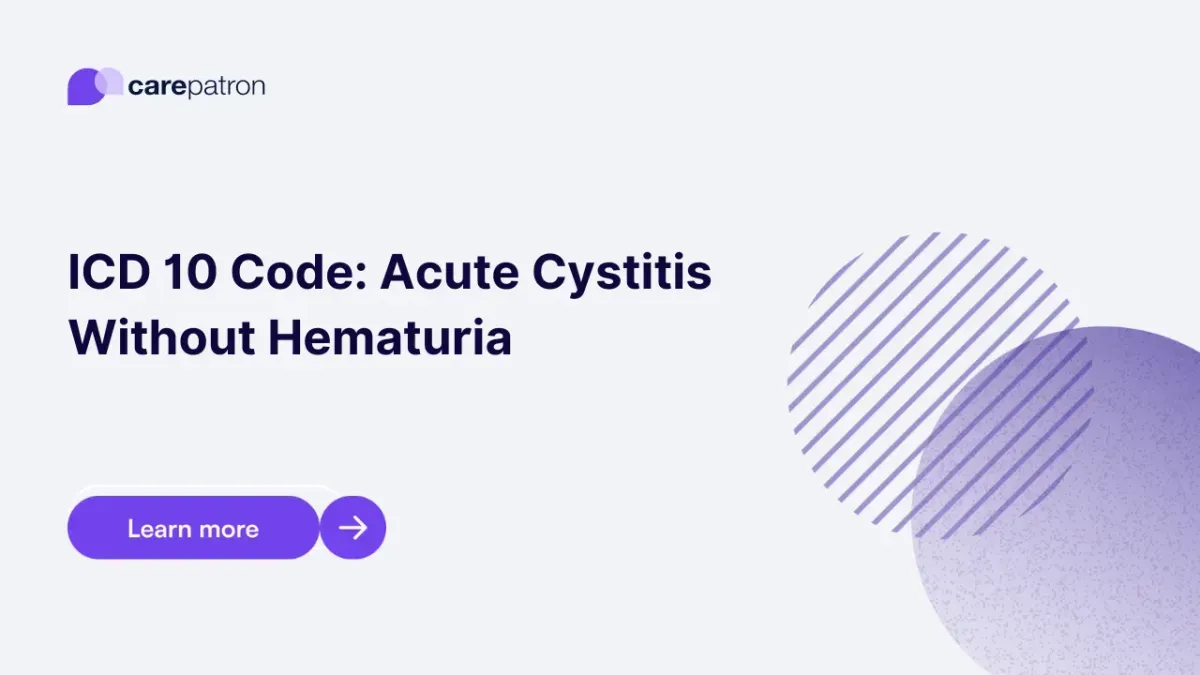
Acute Cystitis Without Hematuria ICD-10-CM Codes
Delve into the detailed guide on acute cystitis without hematuria ICD codes. Understand the codes, their billability, and their clinical relevance.
Use Code
Commonly asked questions
Acute cystitis without hematuria is most commonly caused by bacterial infections, particularly Escherichia coli (E. coli), which enters the urinary tract. Other contributing factors include bladder irritants, certain medications, poor hygiene, or urinary retention.
Diagnosis typically involves a review of symptoms, physical examination, and a urine culture to identify the infectious agent. Additional urinalysis helps detect signs of infection, such as leukocytes and nitrites, even in the absence of visible blood in the urine.
Yes, if left untreated or if recurrent infections occur, acute cystitis can progress to chronic cystitis. This chronic form may require further investigation into underlying urinary tract abnormalities or resistance to standard antibiotic therapy.
EHR and practice management software
Get started for free
*No credit card required
Free
$0/usd
Unlimited clients
Telehealth
1GB of storage
Client portal text
Automated billing and online payments
